View of Toledo (apologies to El Greco…) The rainy clouds make it look much like the El Greco painting as well. Rio Tajo winds around the town, which we entered on foot via the medieval bridge.
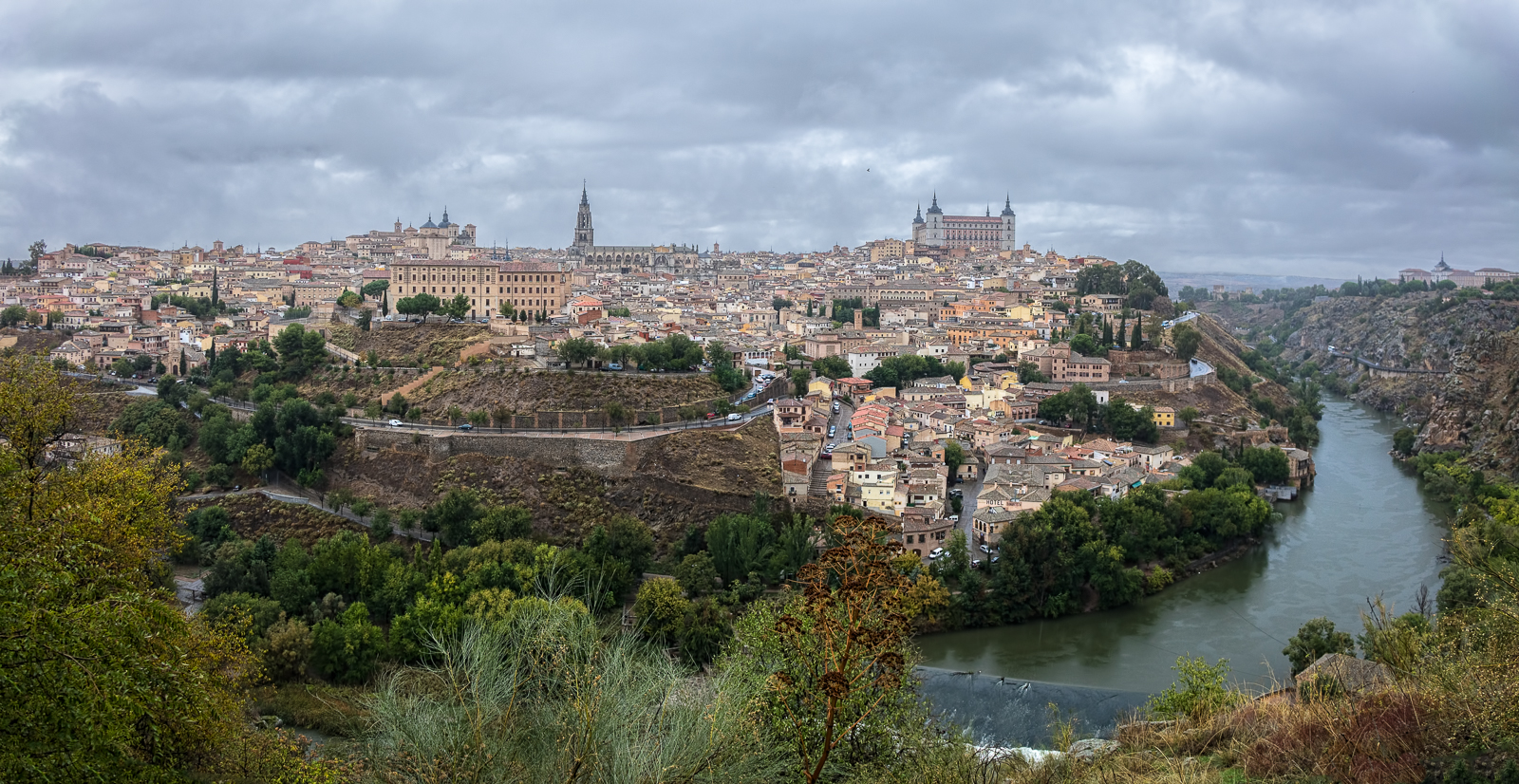
Students Miranda, Nacho, Henry, Tessa posing outside Toledo.
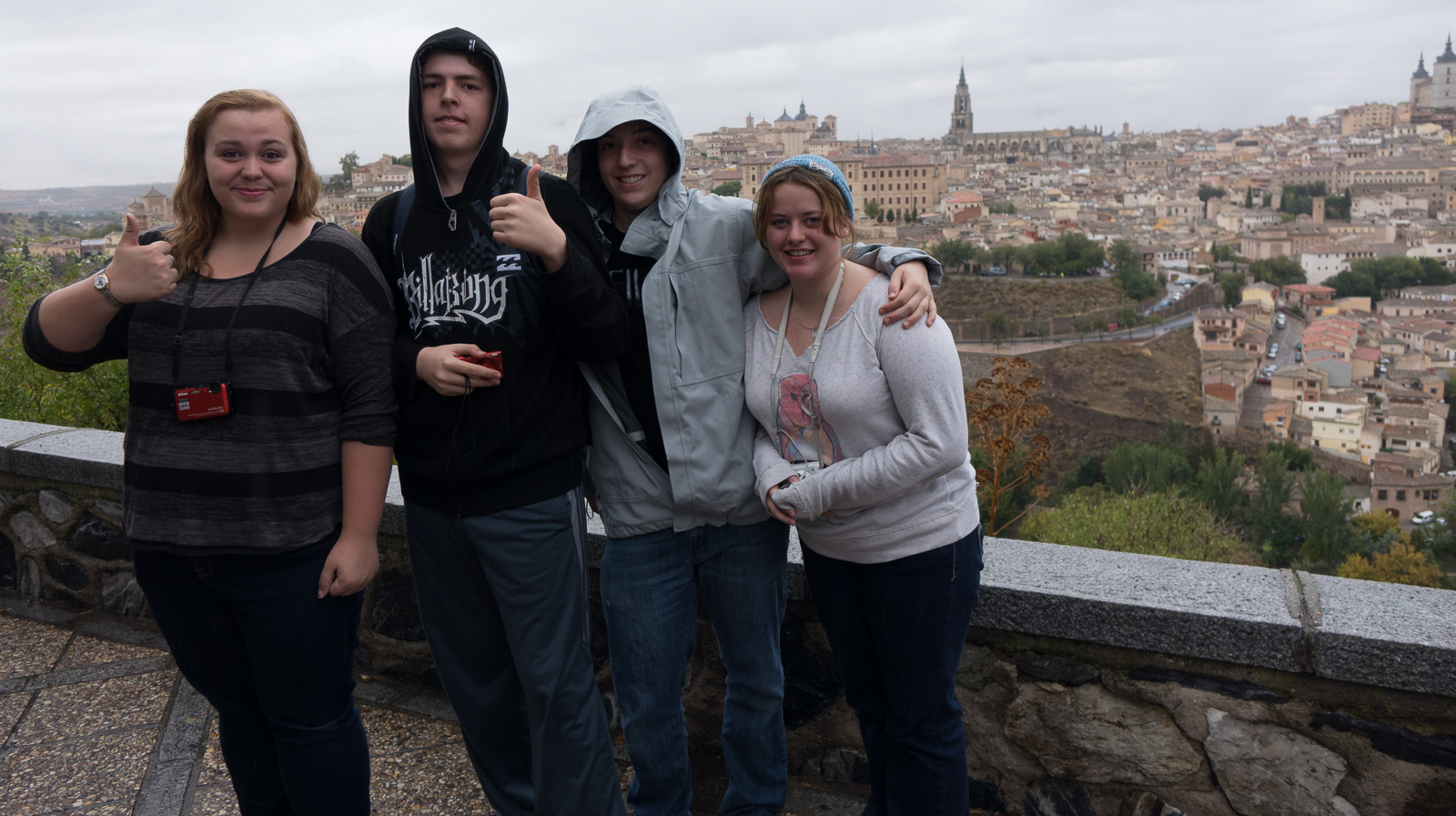
It’s a short walk from the bridge across the river up to the old part of town.

Students got to see how narrow the streets were when these were built during the Middle Ages as they approached the cathedral.
‘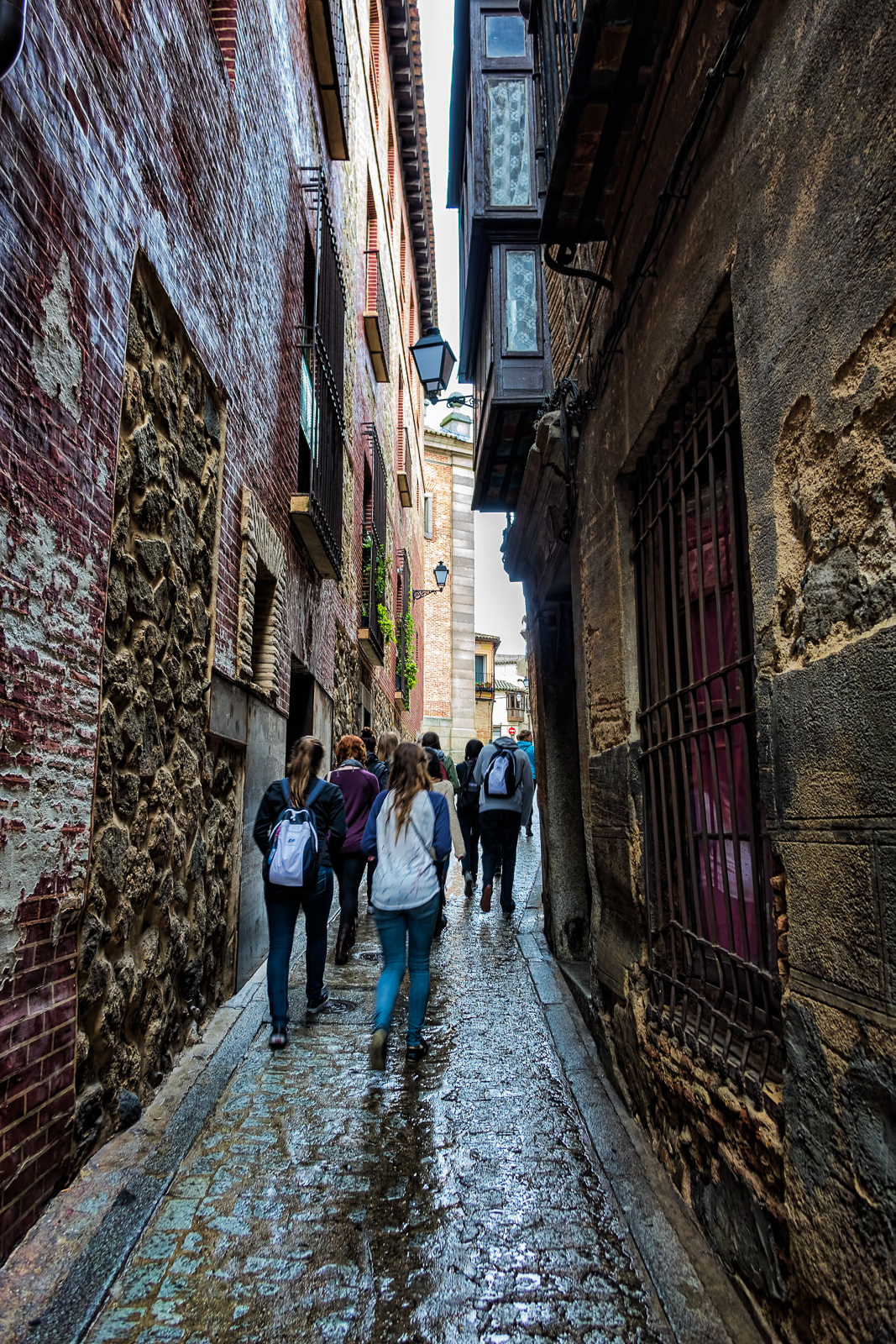
Here is the approach to the Gothic cathedral of Toledo, and typically, you see the bell tower first.
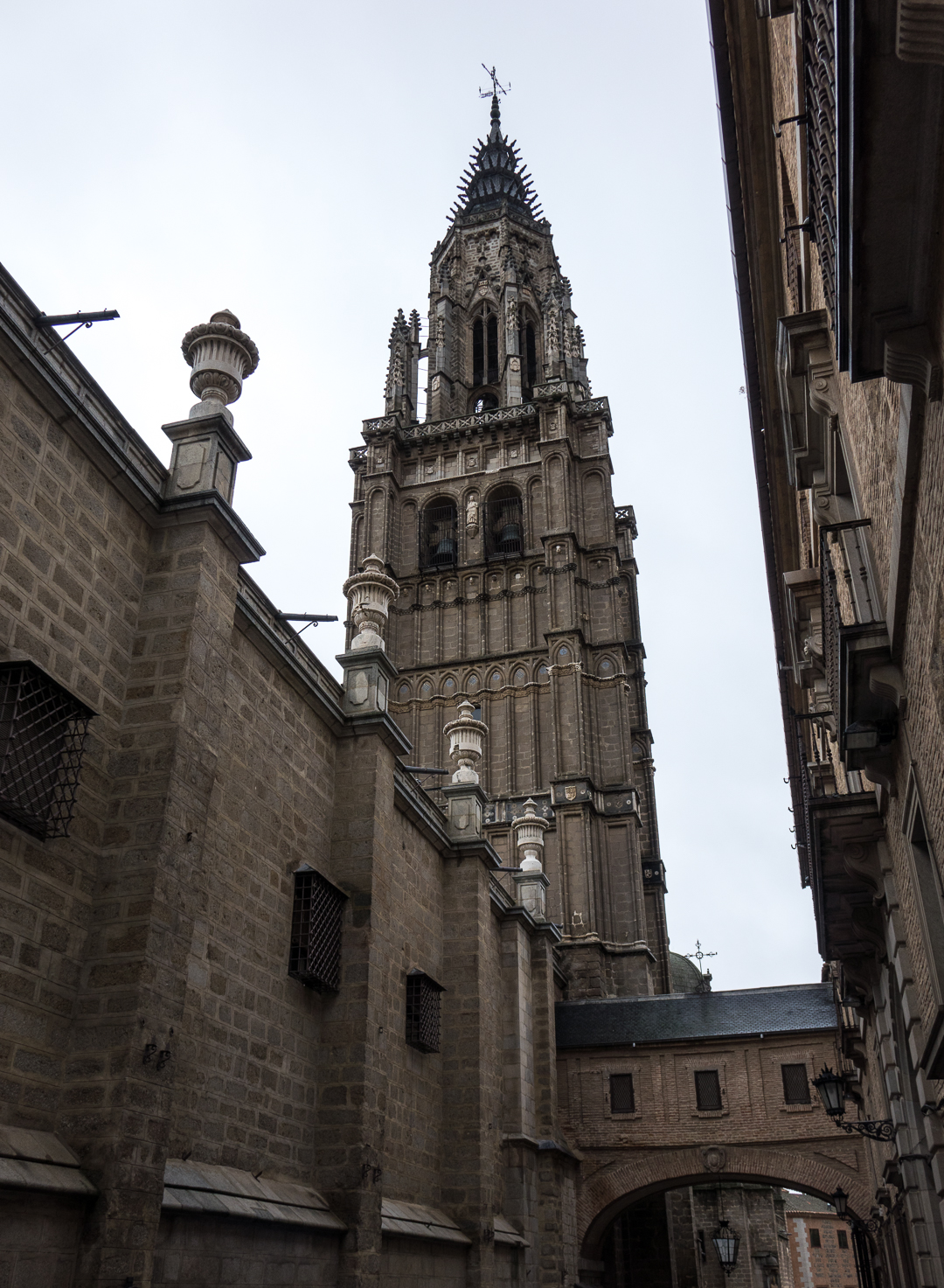
The Gothic facade has a wonderful front portal with customary sculptures overlooking the entrance.
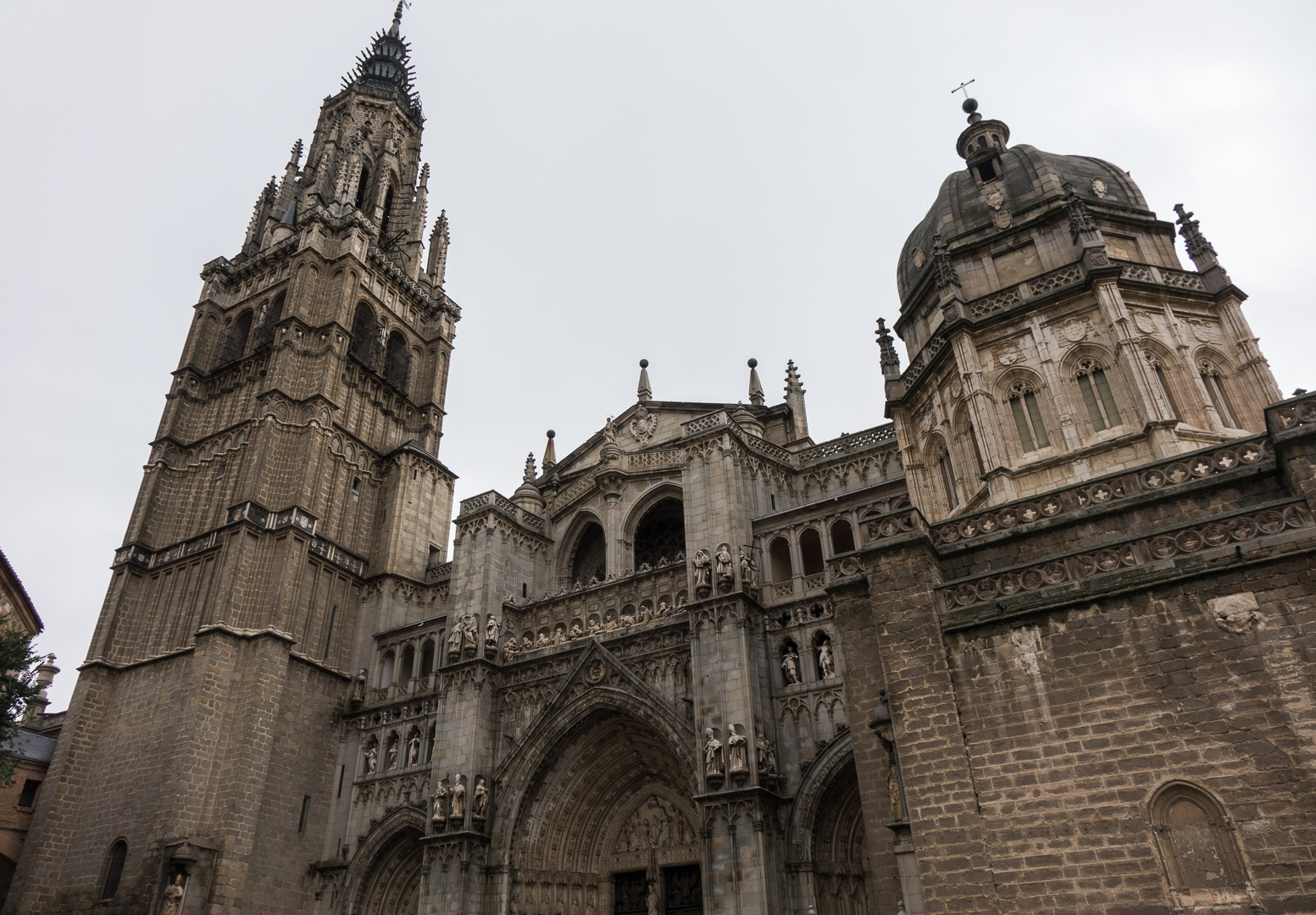
Close up of the sculptures on facade.
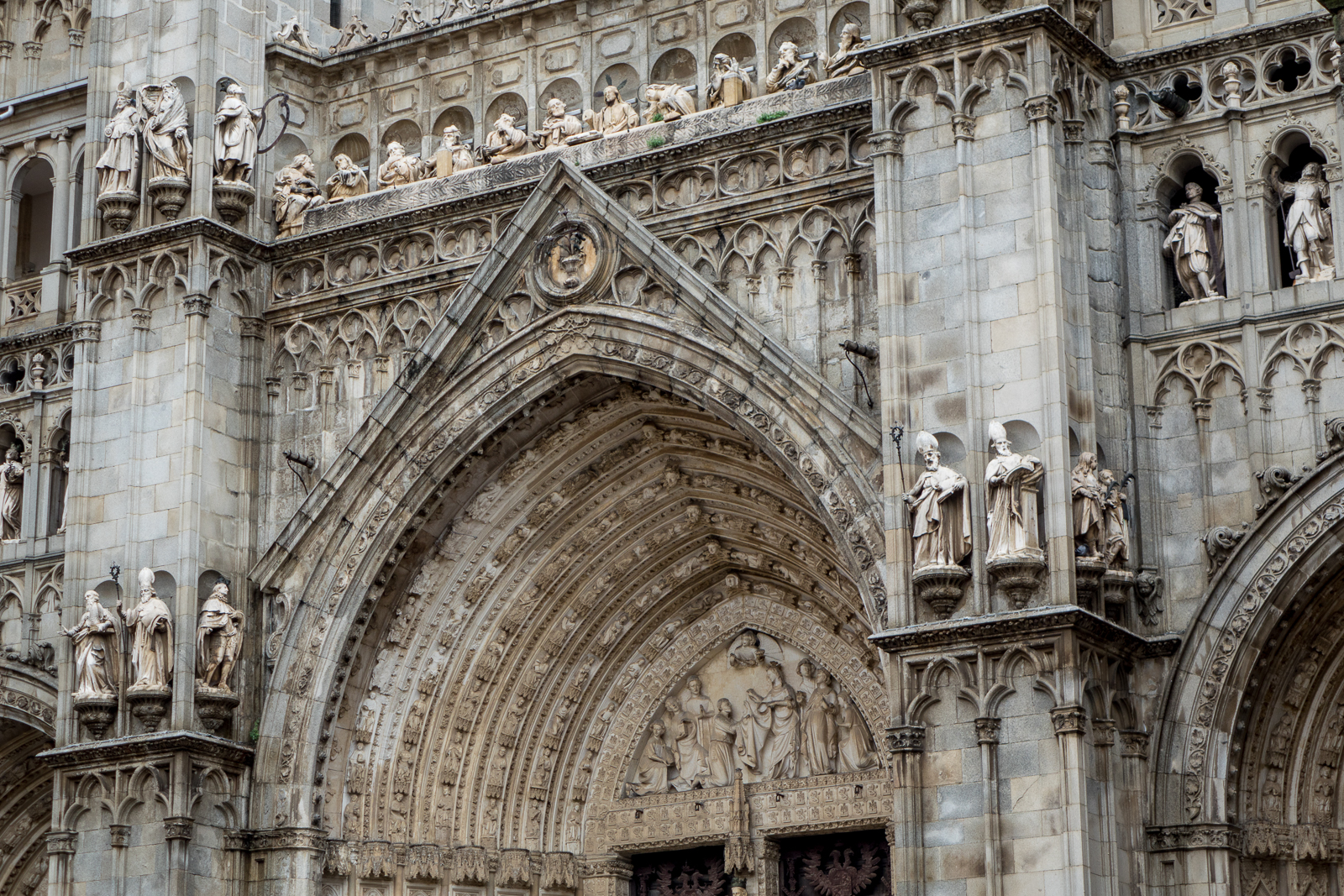
The interior starts out with the usual rose window and pillars….
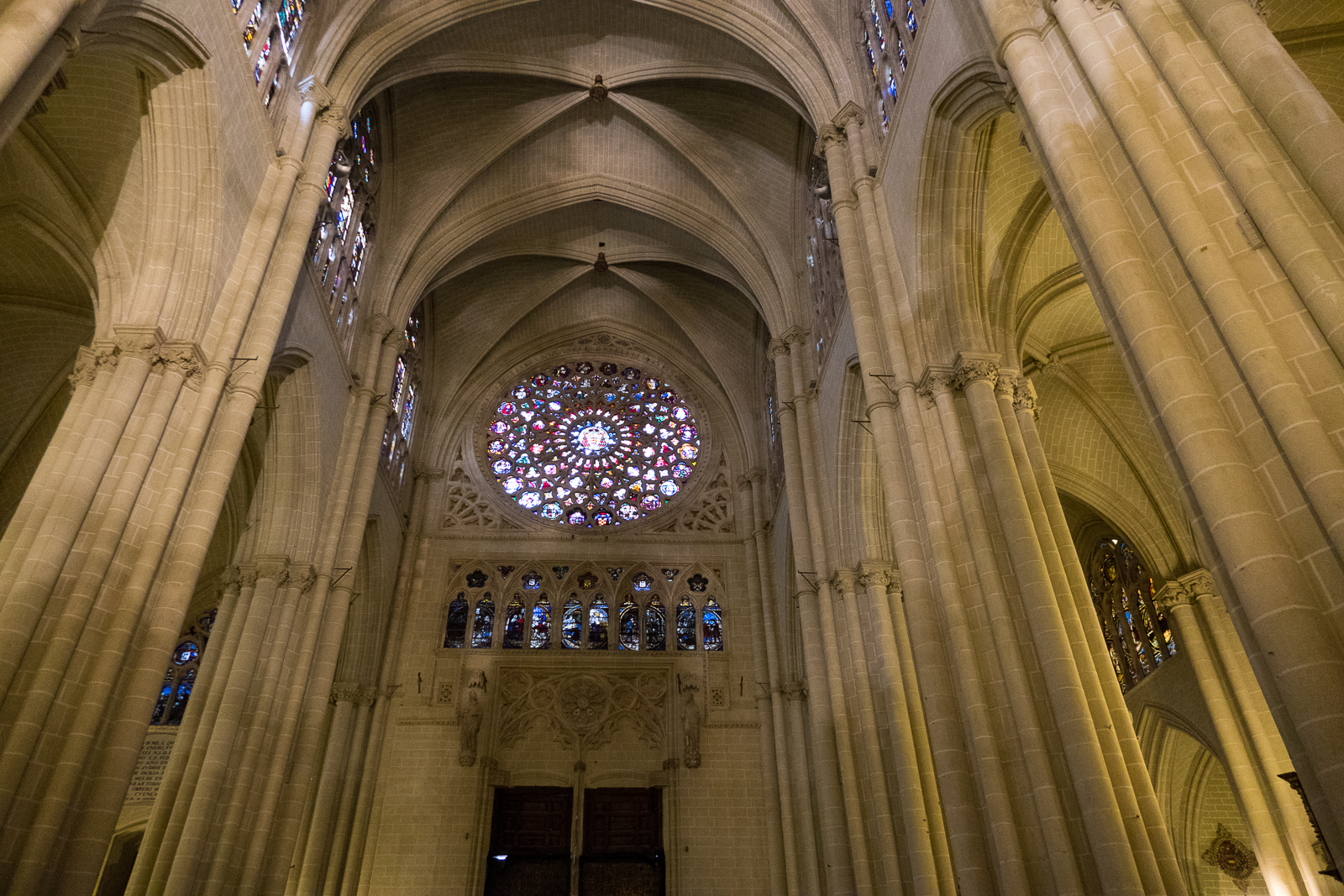
…and an uncharacteristic smiling Madonna and child statue…
‘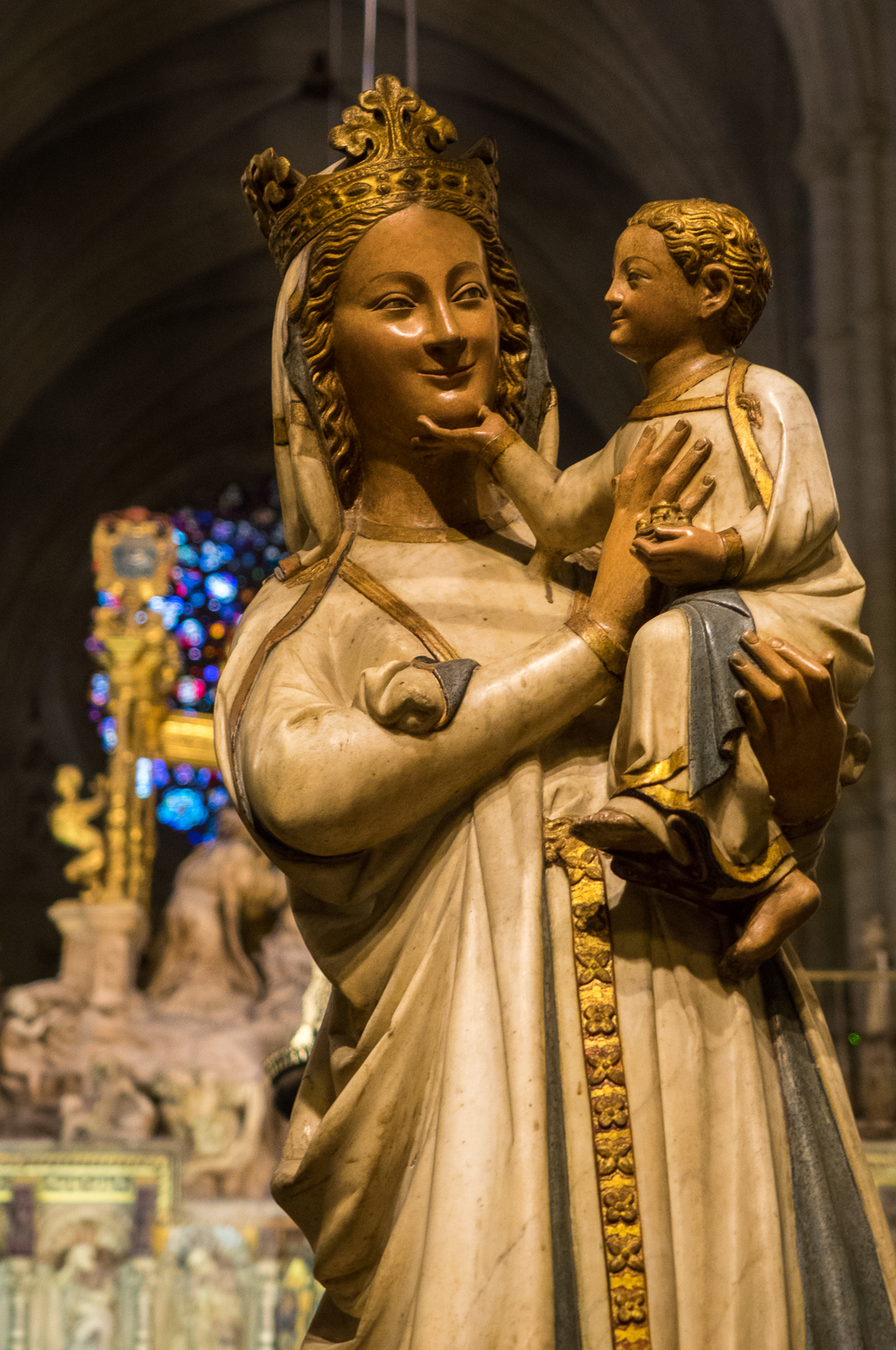
…plus the gilded pipe organ. Apparently, these have to be played every day or they go out of tune easily.
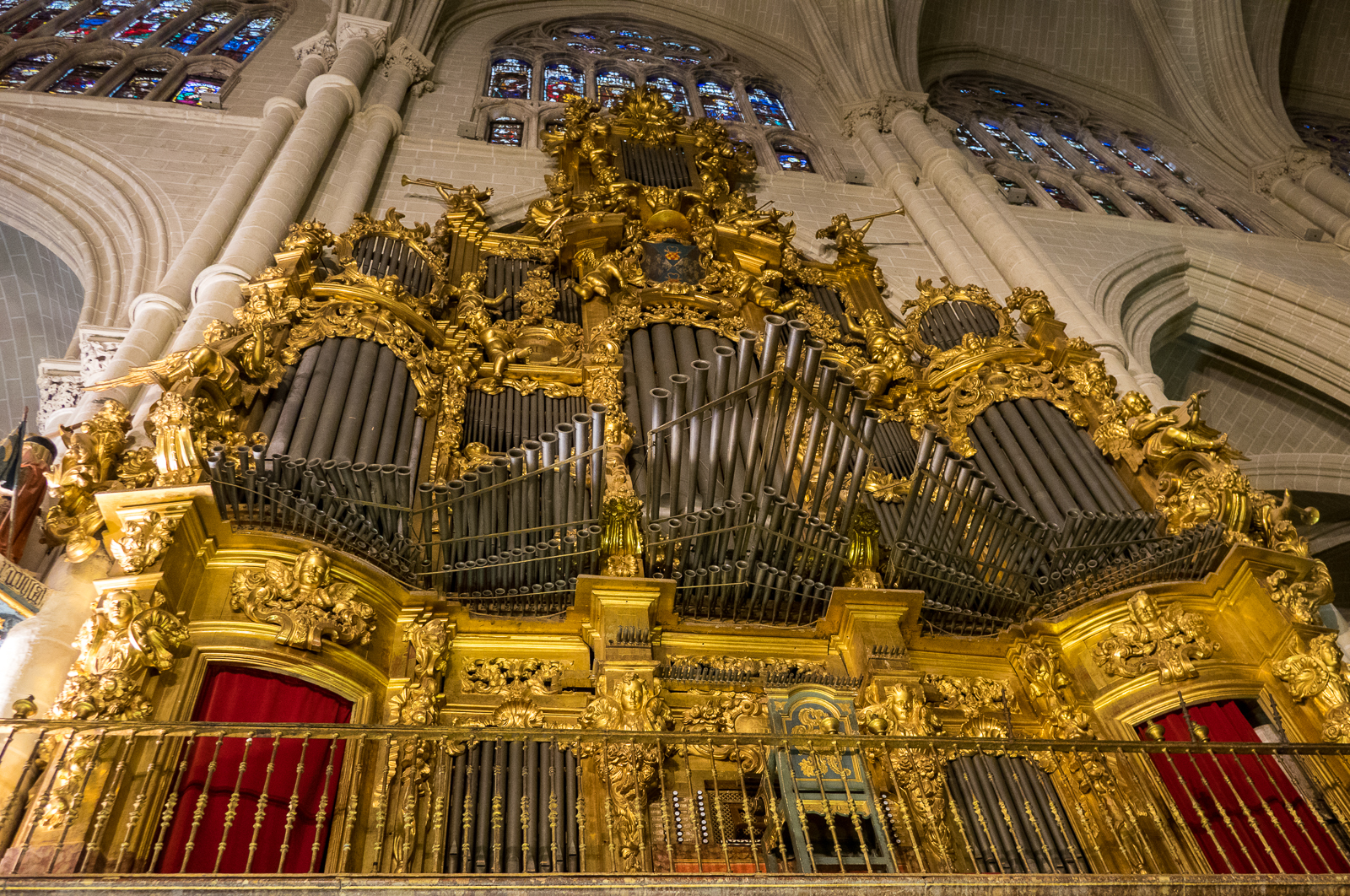
The real gem is the “Transparente” along the side aisles of the cathedral. This is very Baroque. It was masterminded by Narciso Tome and his 4 sons as a skylight to connect the ceiling area visually to the tabernacle it was designed to highlight. The collaboration was intended to let the viewer’s eye blend the frescoes into the sculptures.
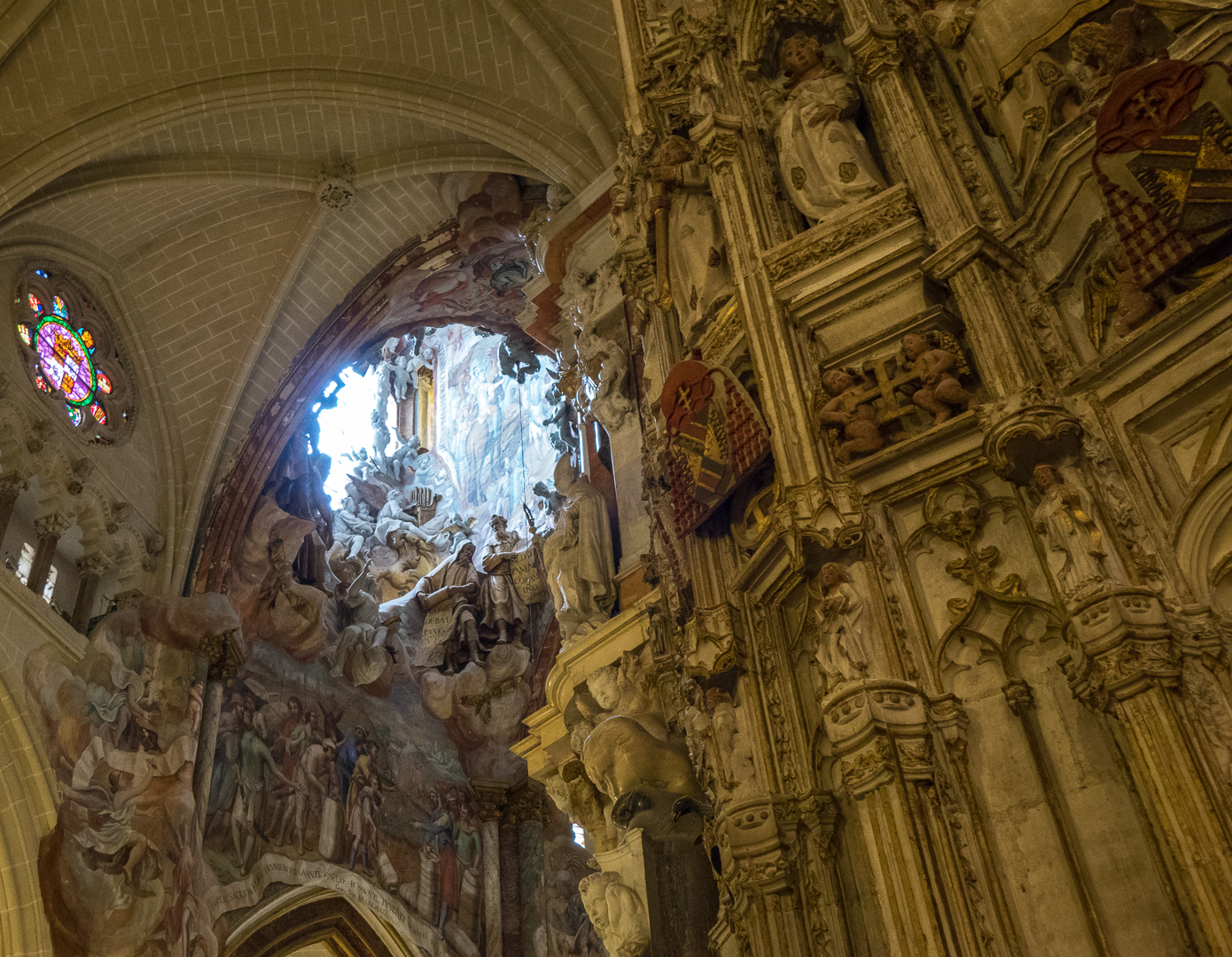
Close-up of the Transparente sculptures.
‘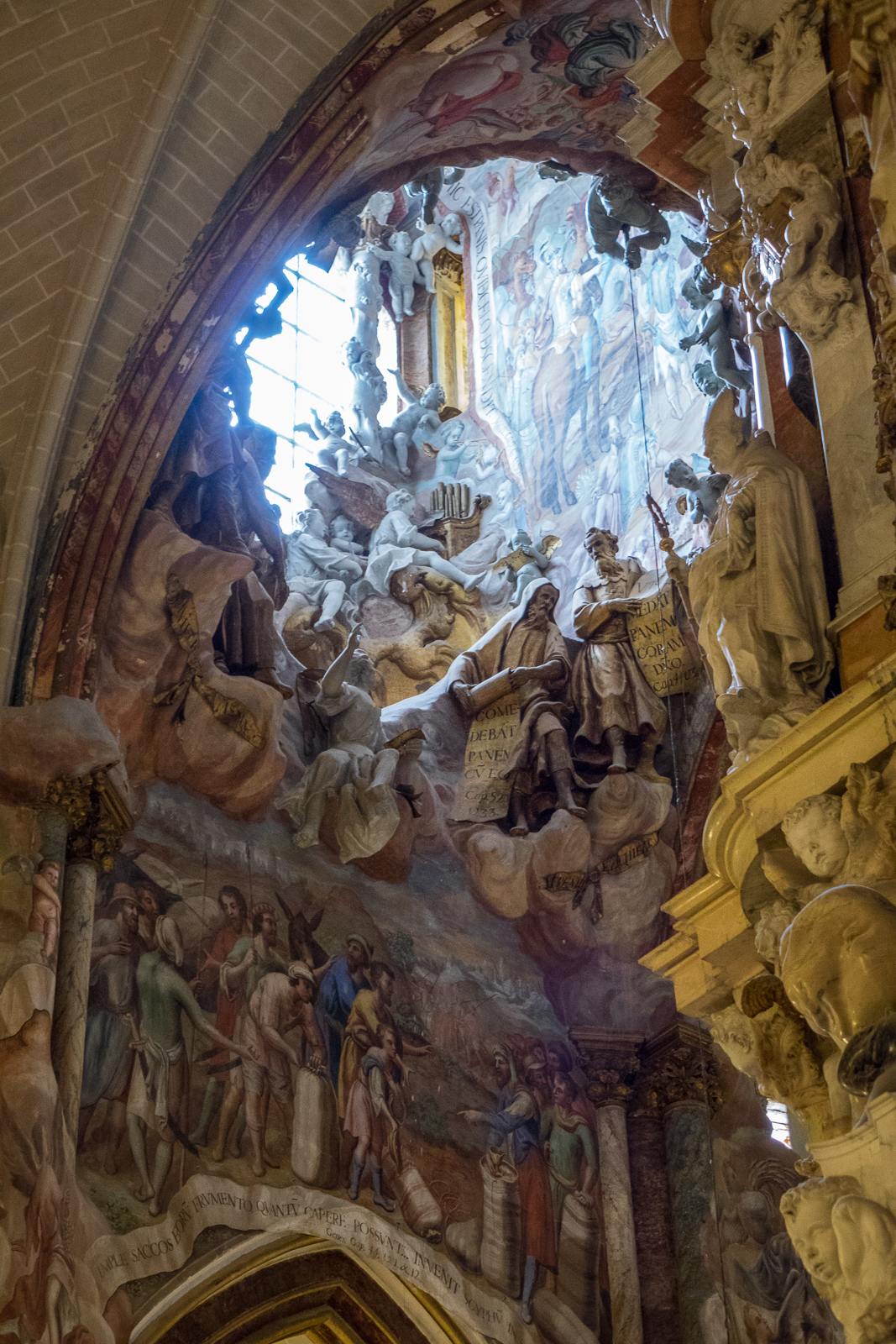
”
”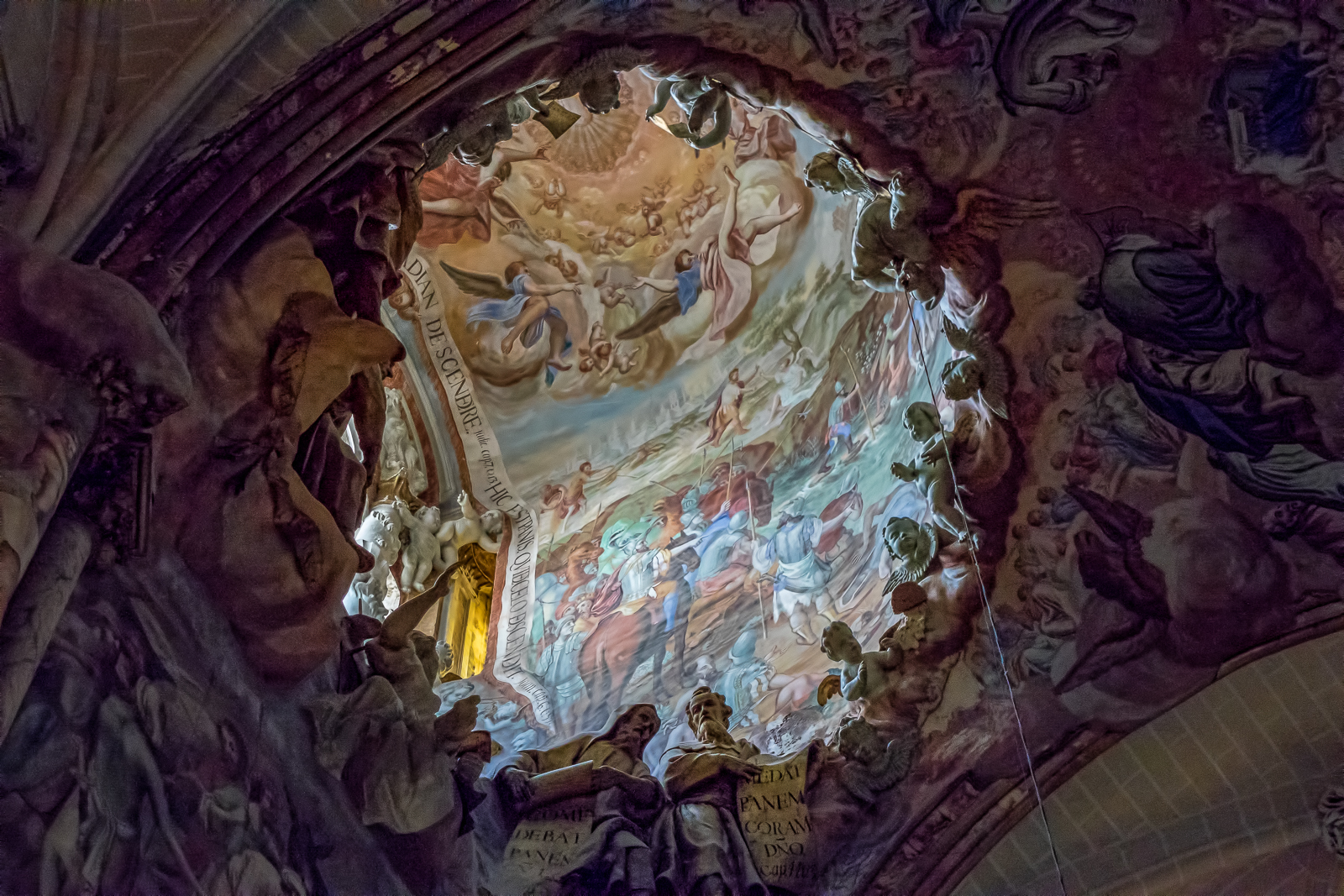
This is the tabernacle area the skylight was designed. Also Baroque.
”
This is one of the chapels in the church of Santo Tome, which has one of El Greco’s most famous paintings, “The Burial of Count Orgaz”. While you can’t take photos of that painting, the crowds thin out a bit further inside where other smaller works of El Greco are featured. The ceiling frescoes are not his, but side paintings are.
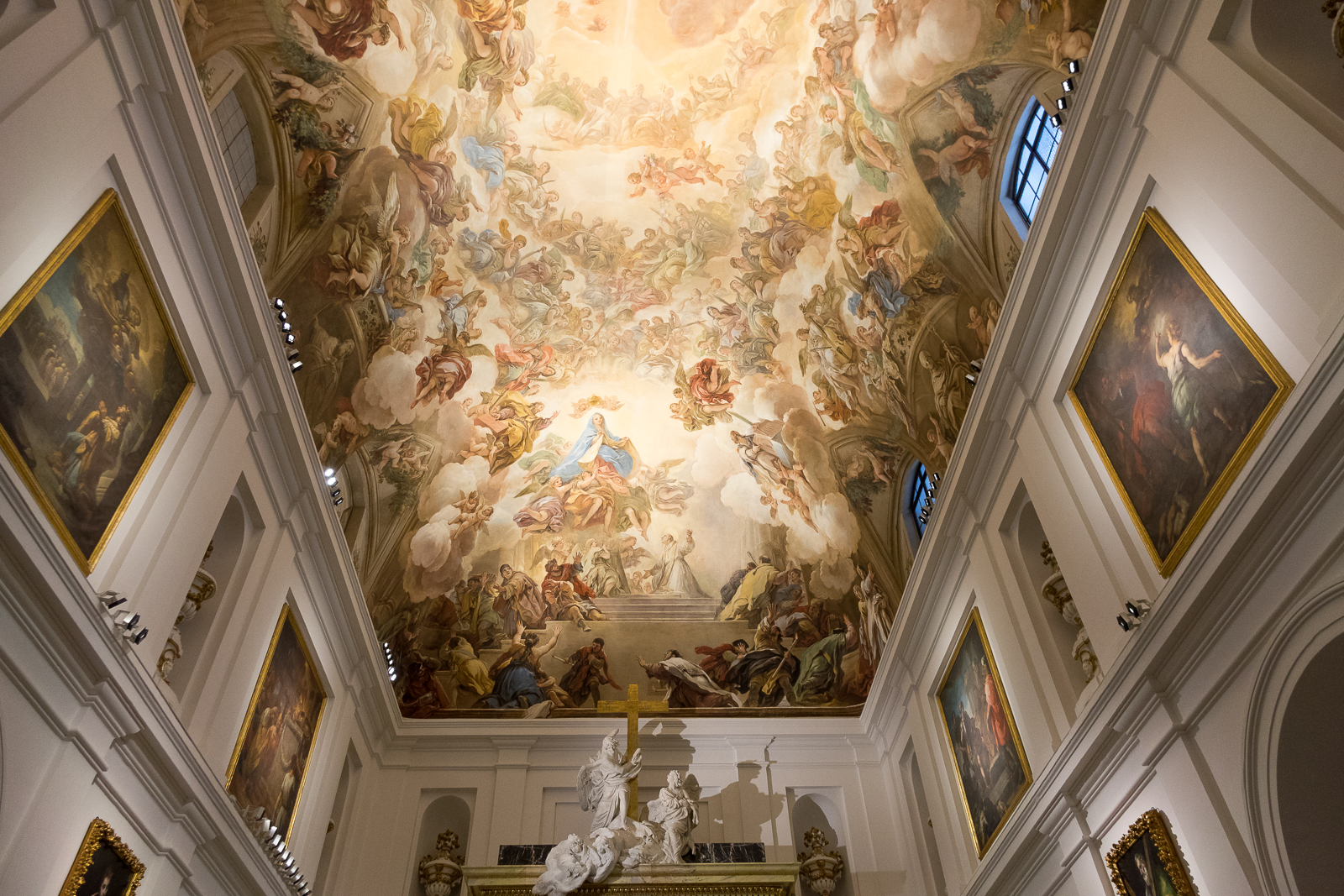
The “Disrobing of Christ” is the main painting in this salon.
‘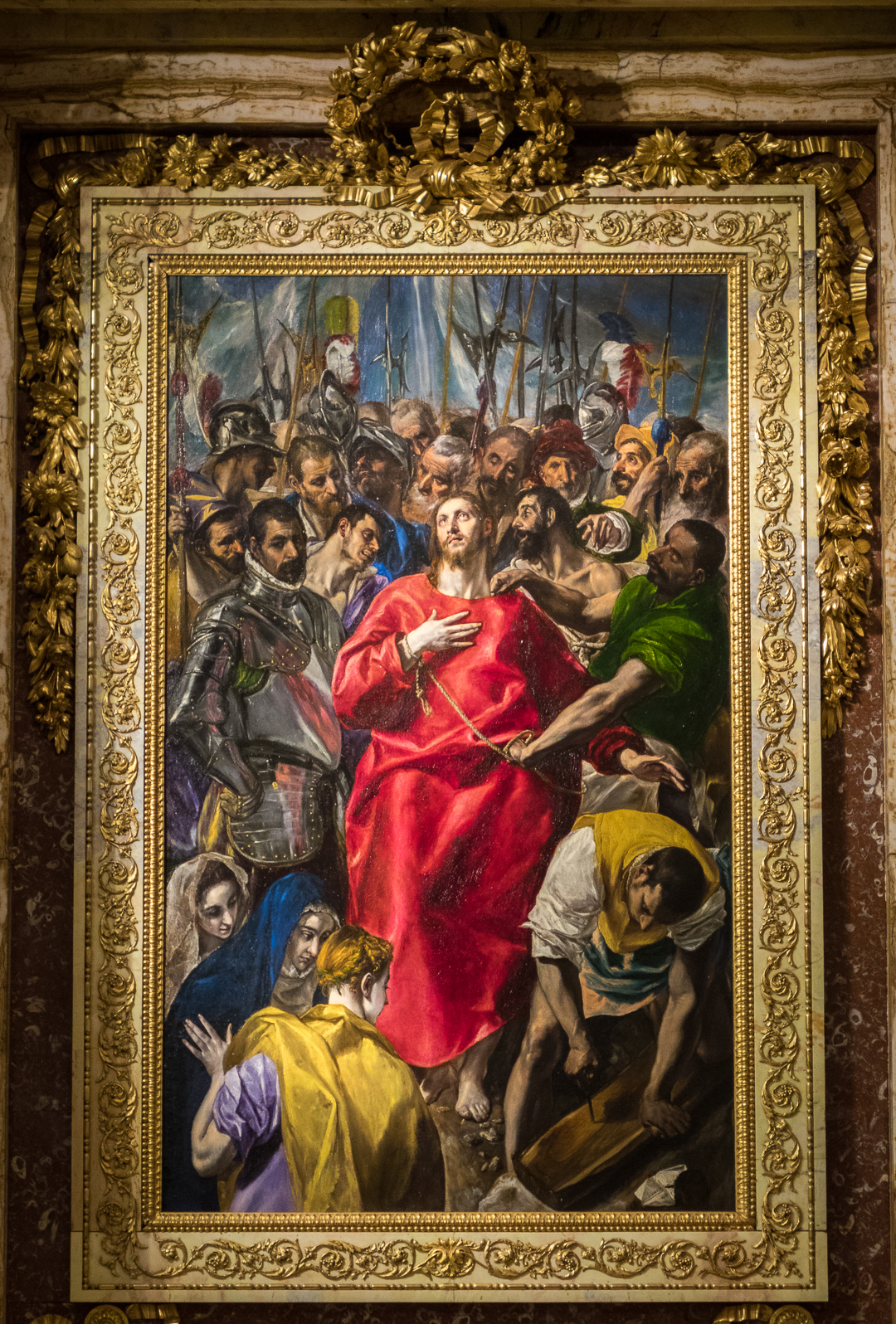
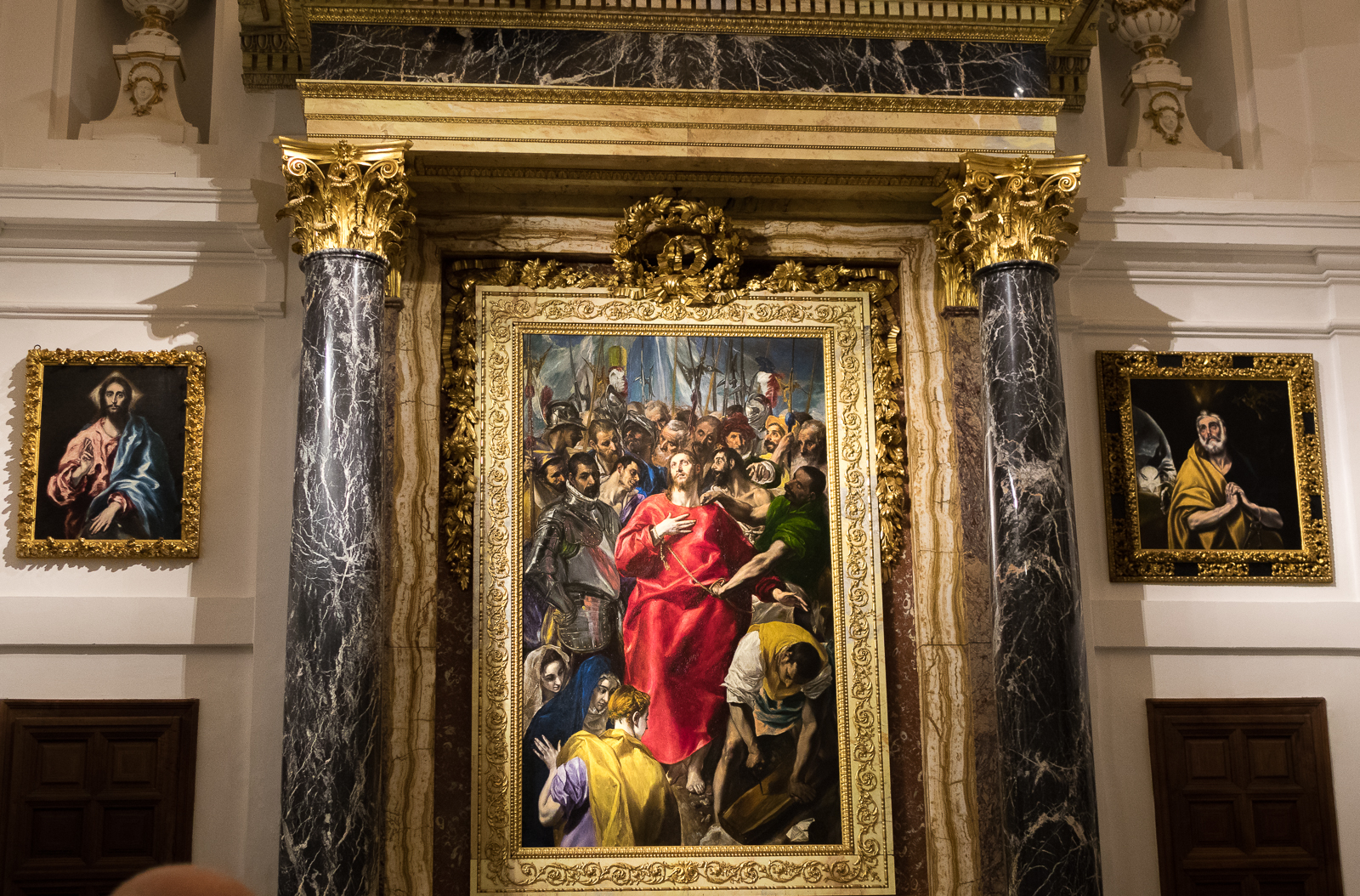
The tile marking Santa Maria la Blanca, also in Toledo’s former Jewish quarter. Toledo was home to Christians, Jews, and Muslims for many years of the Middle Ages while the Christians and Muslims fought over and traded territory during the Reconquista war years. This was originally a synagogue built for in the Jewish quarter in the 12th century.
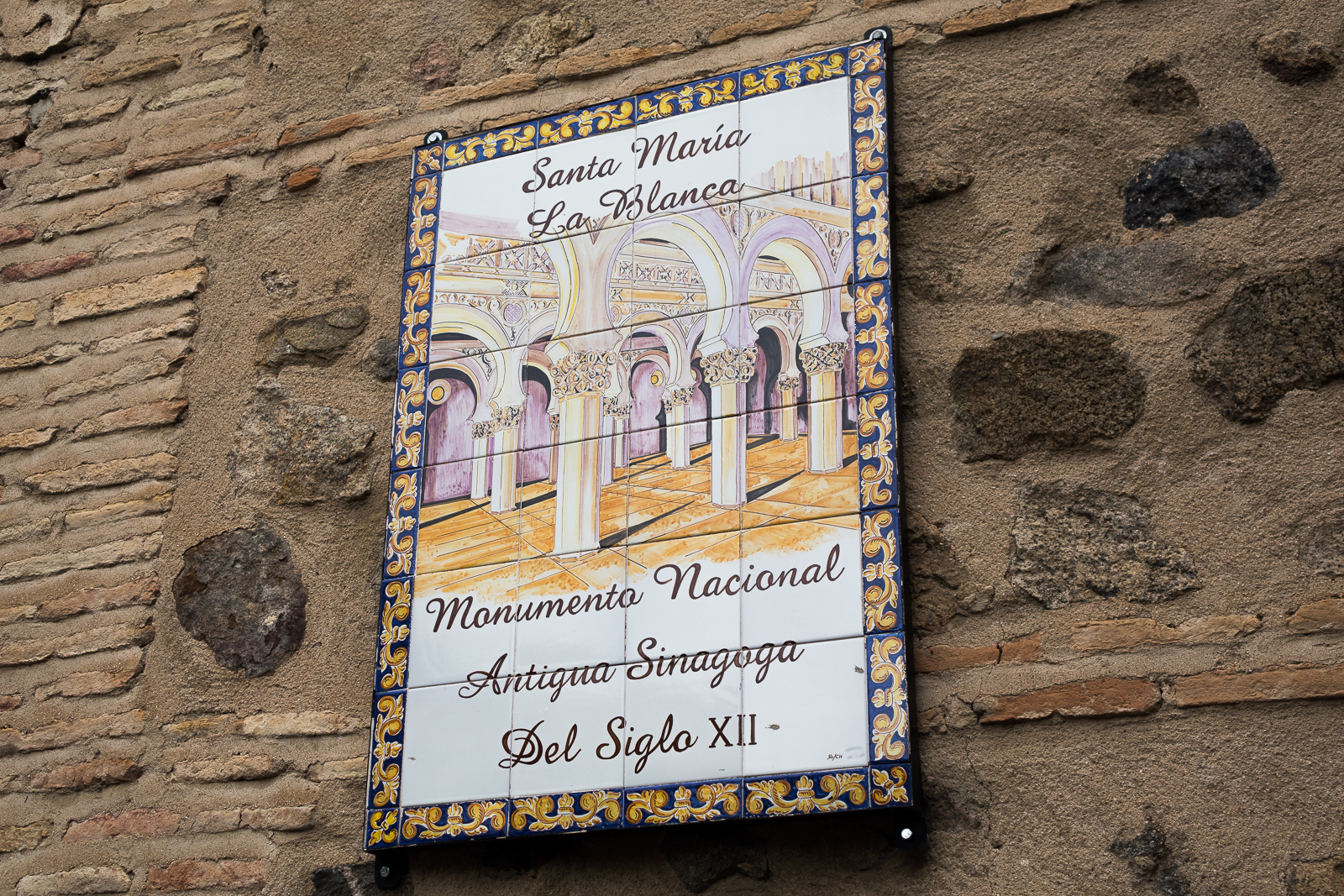
The architectural features of the buildings show how all 3 cultures blended artistic talents for the city’s art in the 12th century. When Ferdinand and Isabela expelled the Jews in 1492/3, (yeah, bad move) synagogues like this were usually converted into Catholic churches.
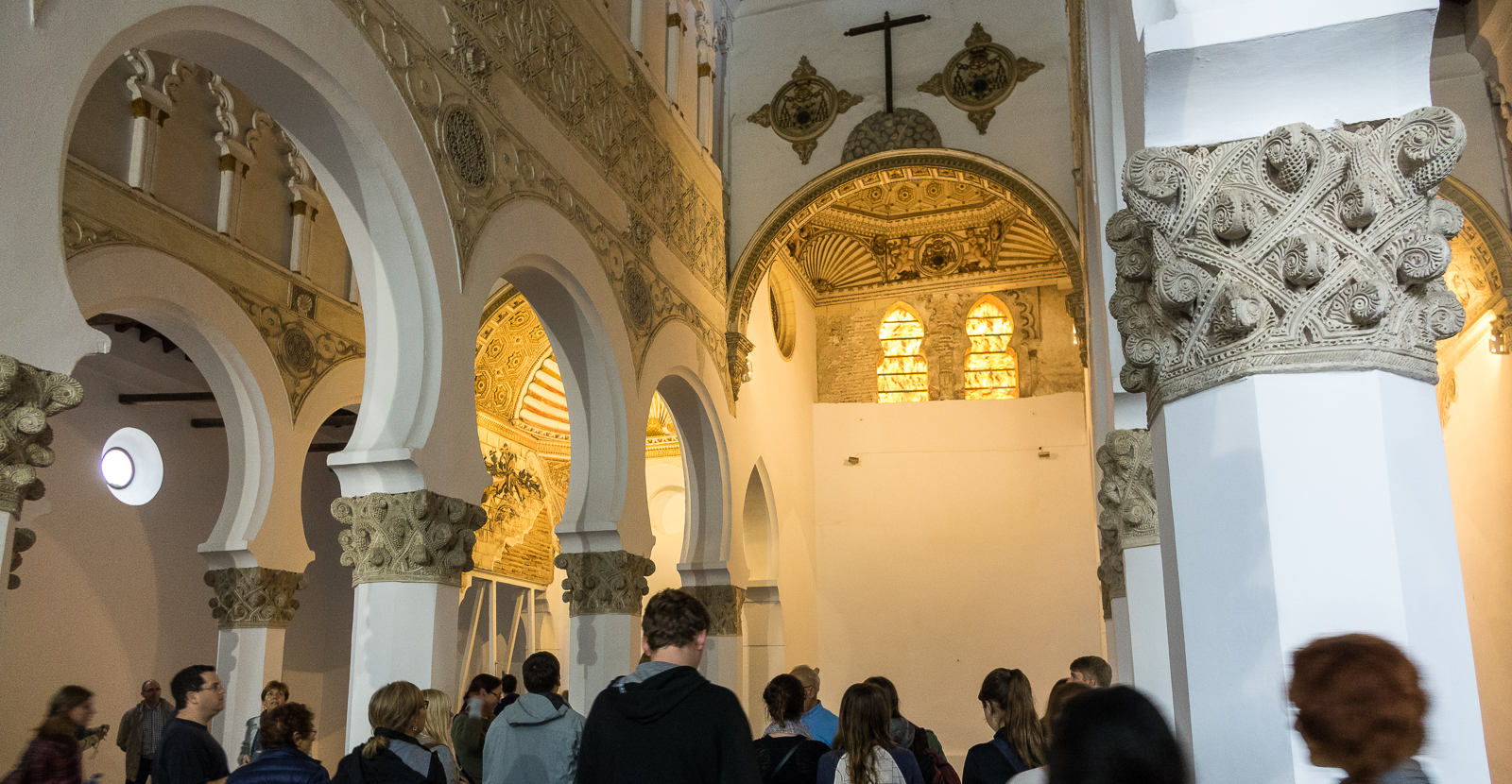
Signs in the back of Santa Maria la Blanca indicate partnerships with the state of Israel to educate tourists about history/contribution of the Jewish community to Spanish culture at that time.
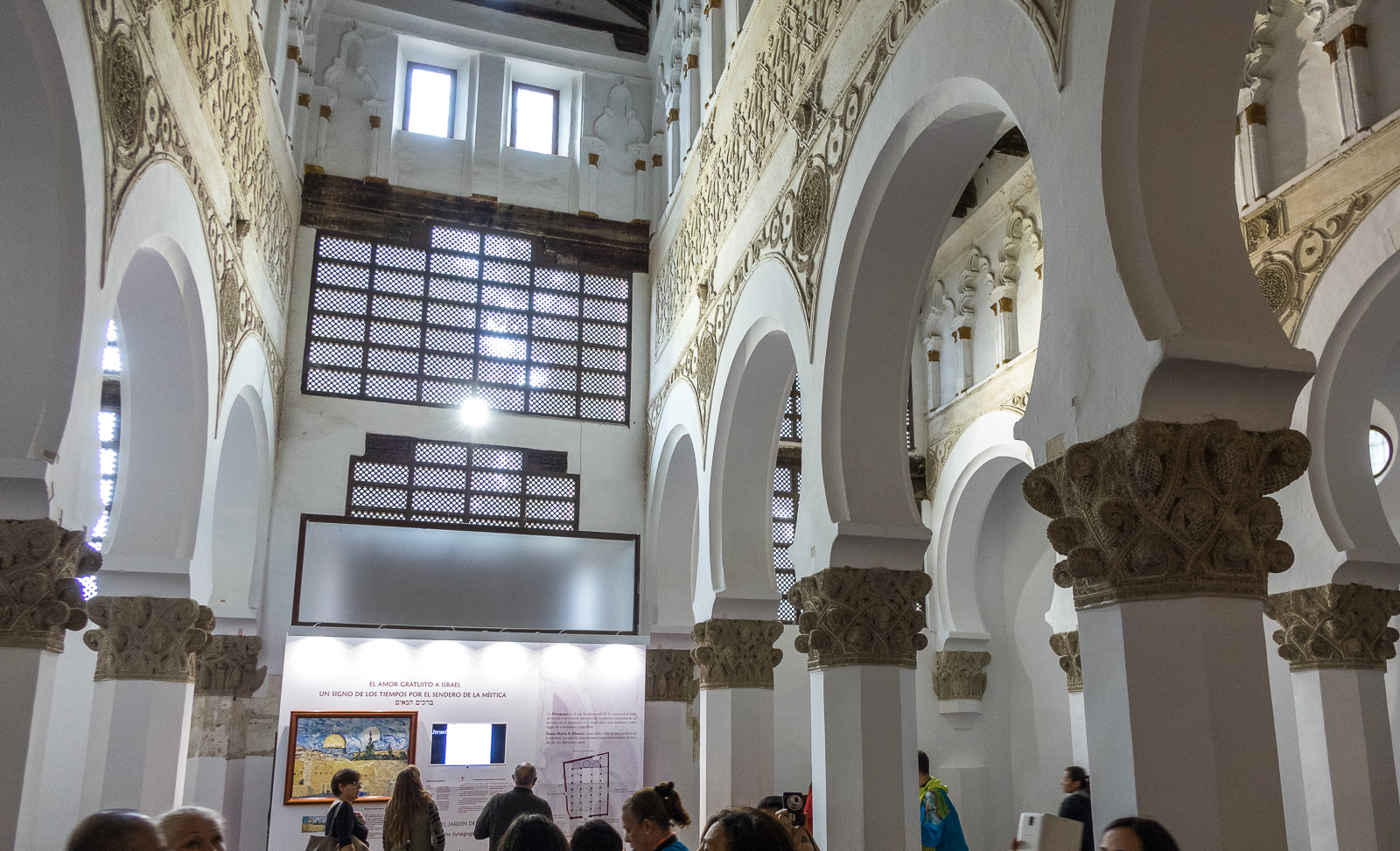
Really beautiful plaster work on the walls.

Artisans combined Arabic geometric designs with the Star of David and the conch shell of St. James, the patron saint of Spain. Not many other places can boast mixing 3 religious traditions in one building.
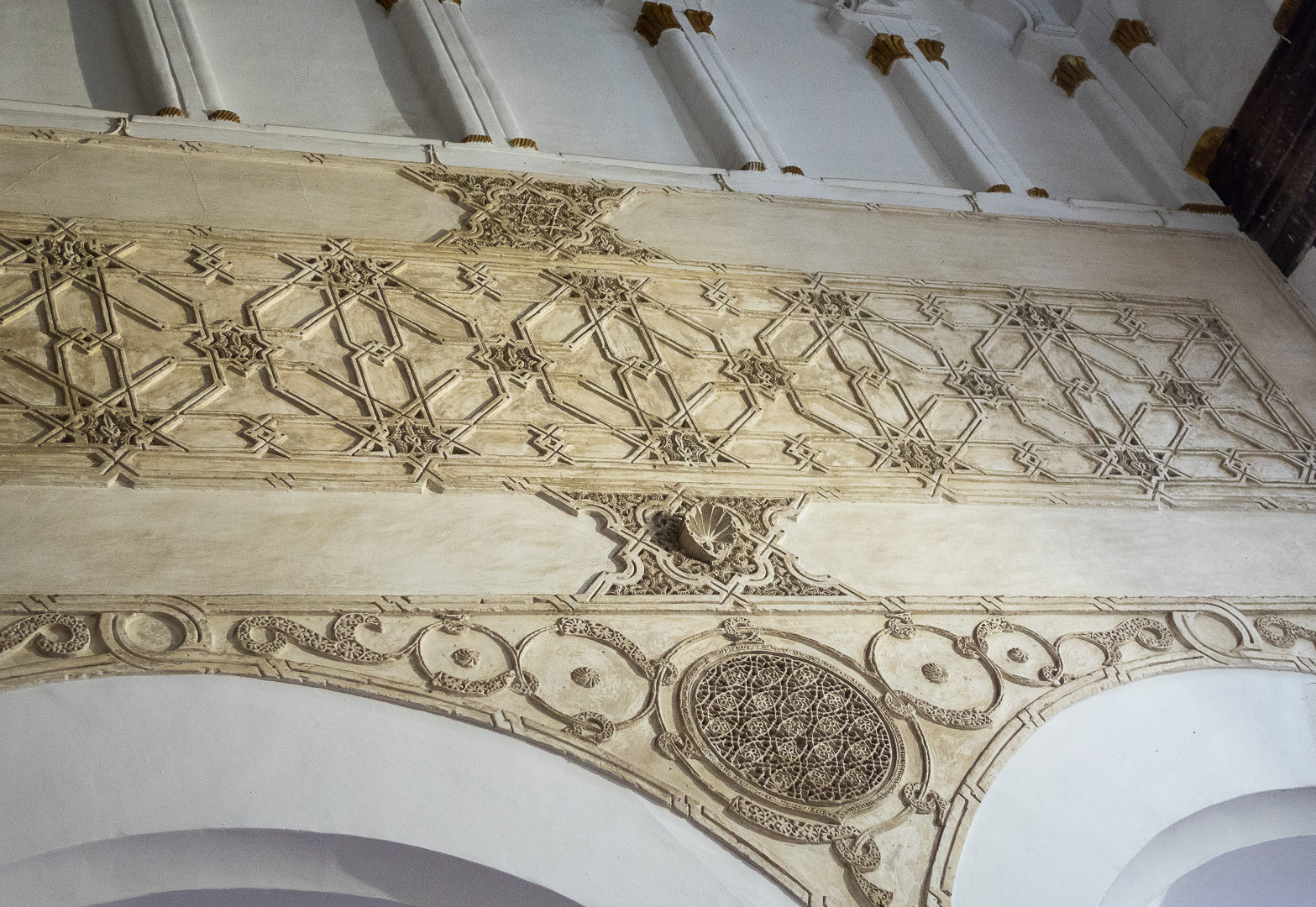
”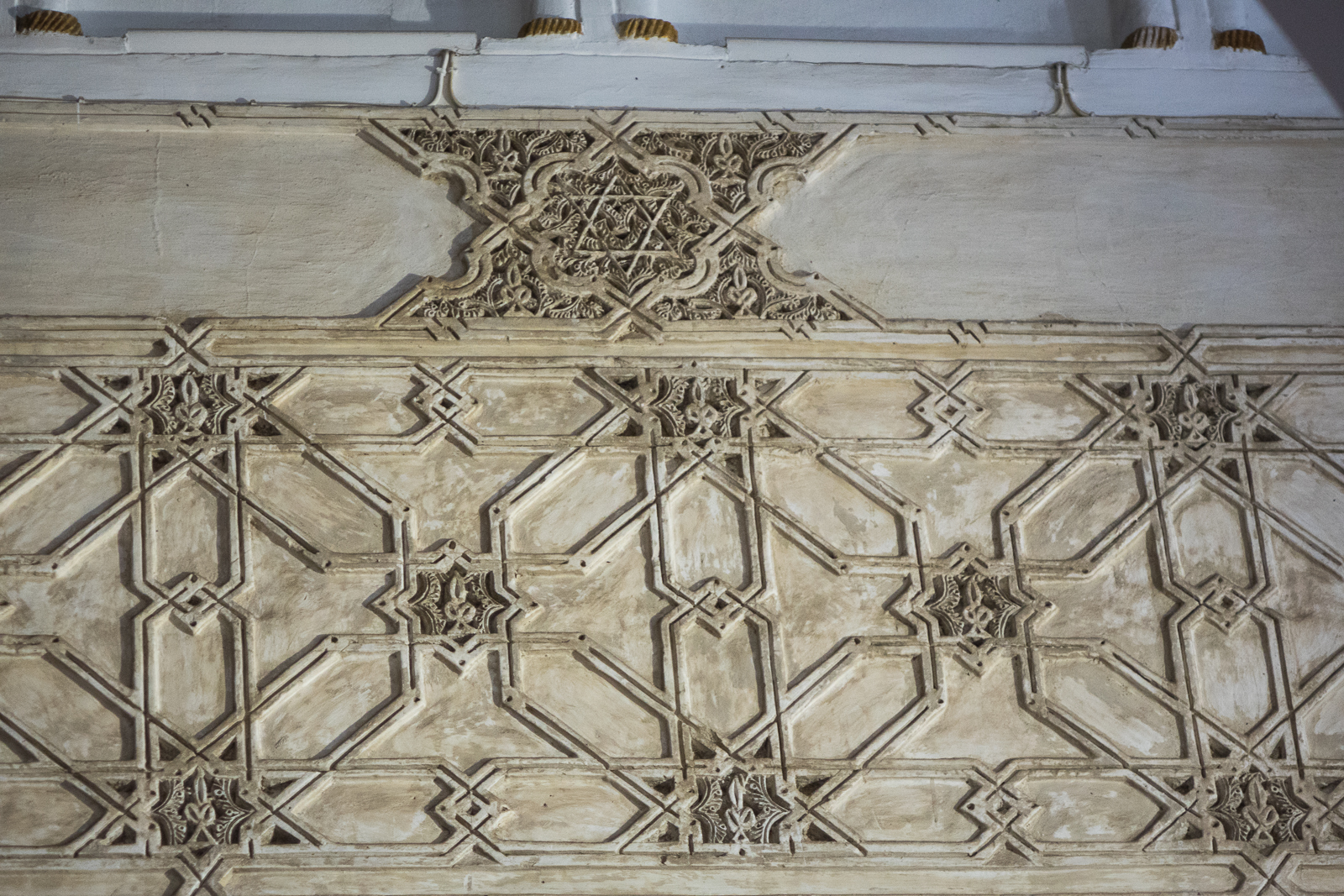
The horseshoe arch was a typical design in mudejar architecture in Spain.
‘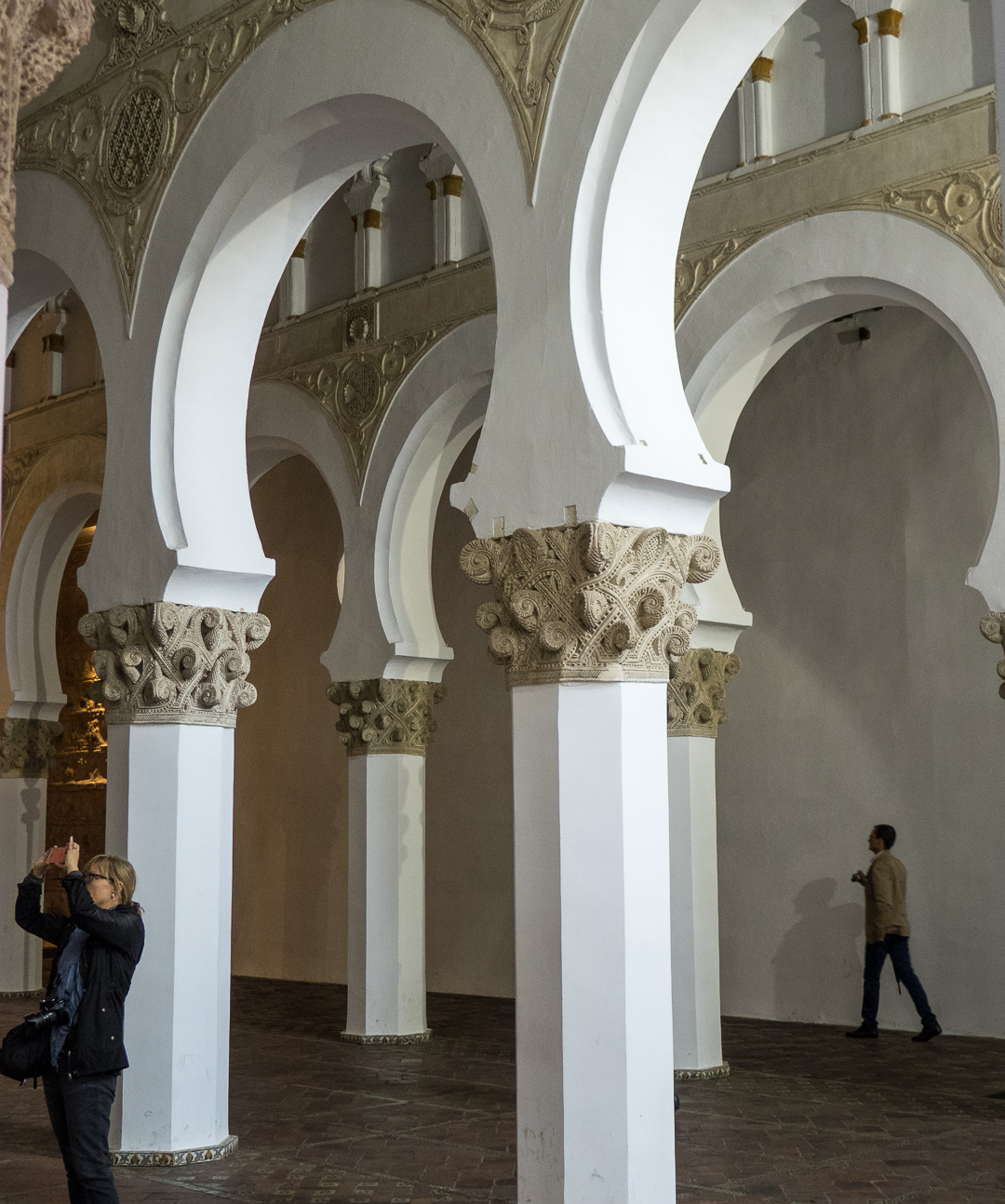
Eduardo, our sprightly 80 year old guide in Toledo, also educated us about how steel was tempered for superior sword making in Toledo. We toured a Damascene jewelry/sword shop where artisans delicately tapped gold wire into jewelry in intricate designs.
